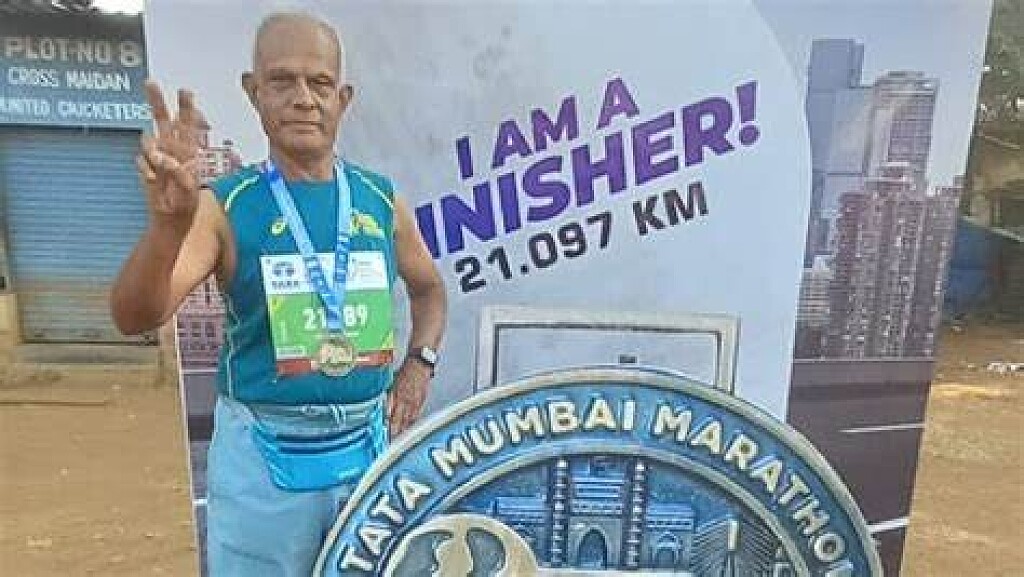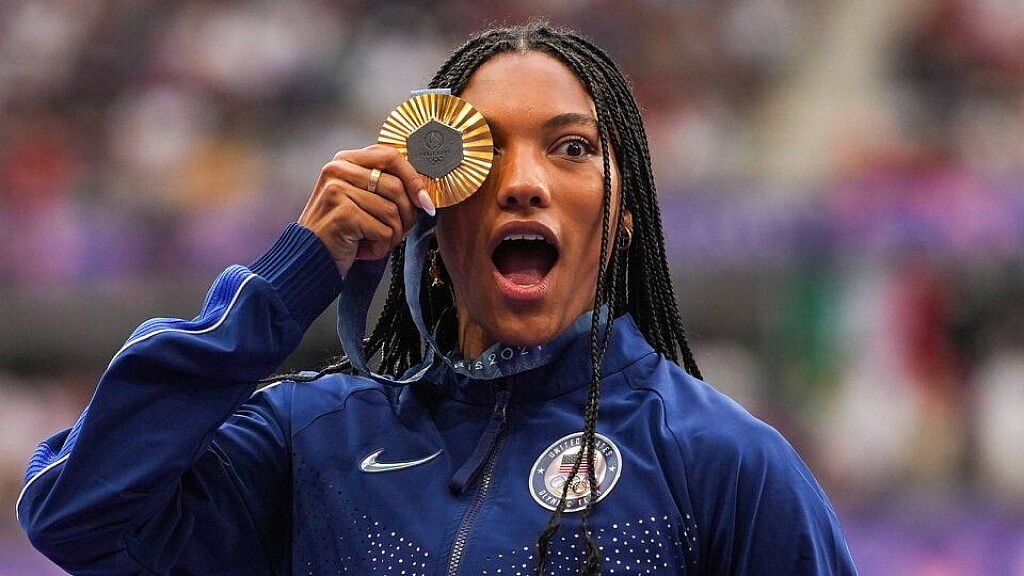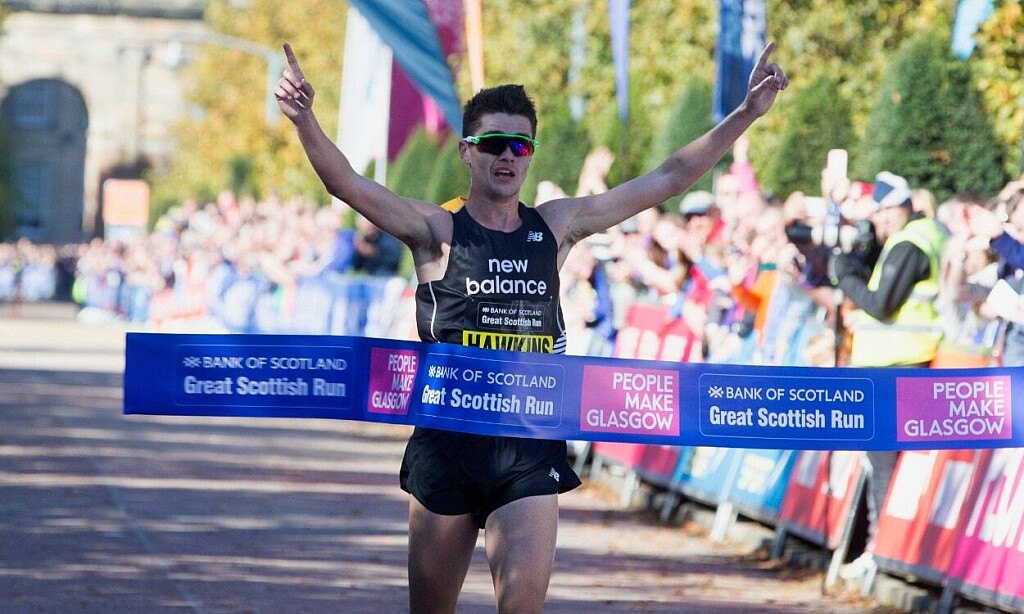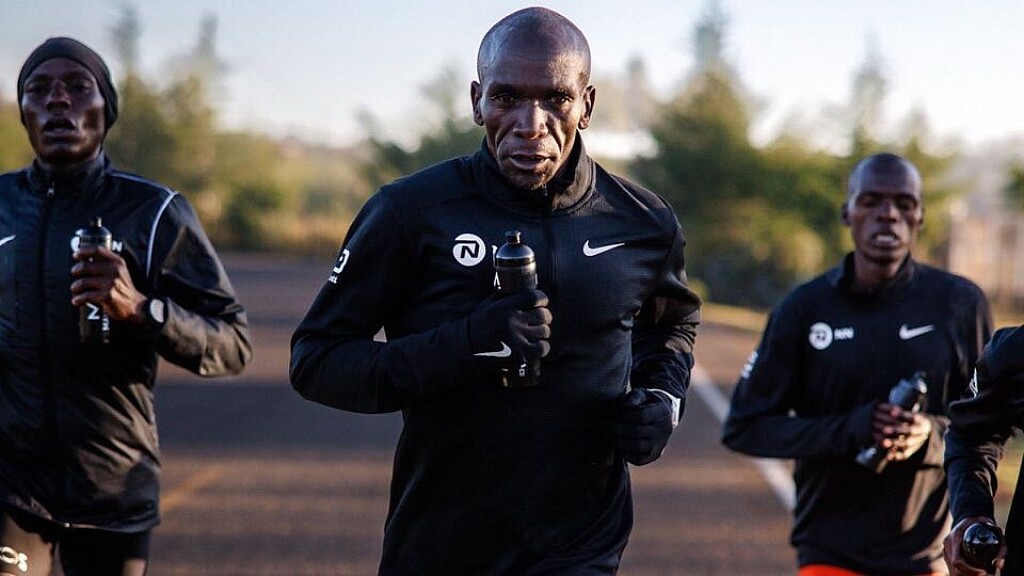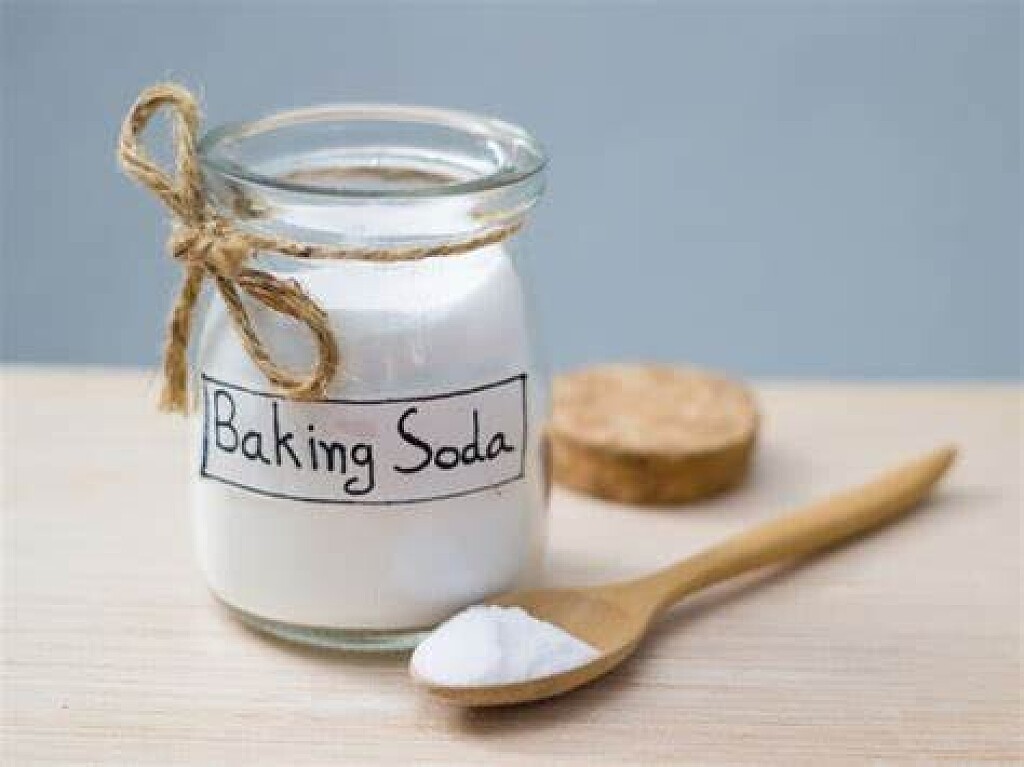Running News Daily
Top Ten Stories of the Week
10/12/2024
These are the top ten stories based on views over the last week.
75-Year-Old Gopinath Mohan Running in Vedanta Delhi Half Marathon Proves Age is no Barrier
At 75, while many are content to observe life from the sidelines, Gopinath Mohan is actively moving forward-quite literally. A retired defense finance official, he has spent the last decade embracing running, proving that it's never too late to begin a new chapter.
His unexpected journey into running started at the age of 65. "In September 2014, I just ran in Mysore," he recalls. "I finished a 5K in 40 minutes. Even without prior experience, I felt I had something within me. I started running and never stopped. For the past 11 years, I've run daily."Since then, Gopinath has taken part in numerous events across India, including the renowned Vedanta Delhi Half Marathon. Although he hasn't participated in person, his excitement for the event is clear.
"Excellent, very nice," he says about the marathon. "Though I haven't done it in person, I've been participating virtually for the past five years. Whenever I run, even virtually, it feels like I'm with the crowd."
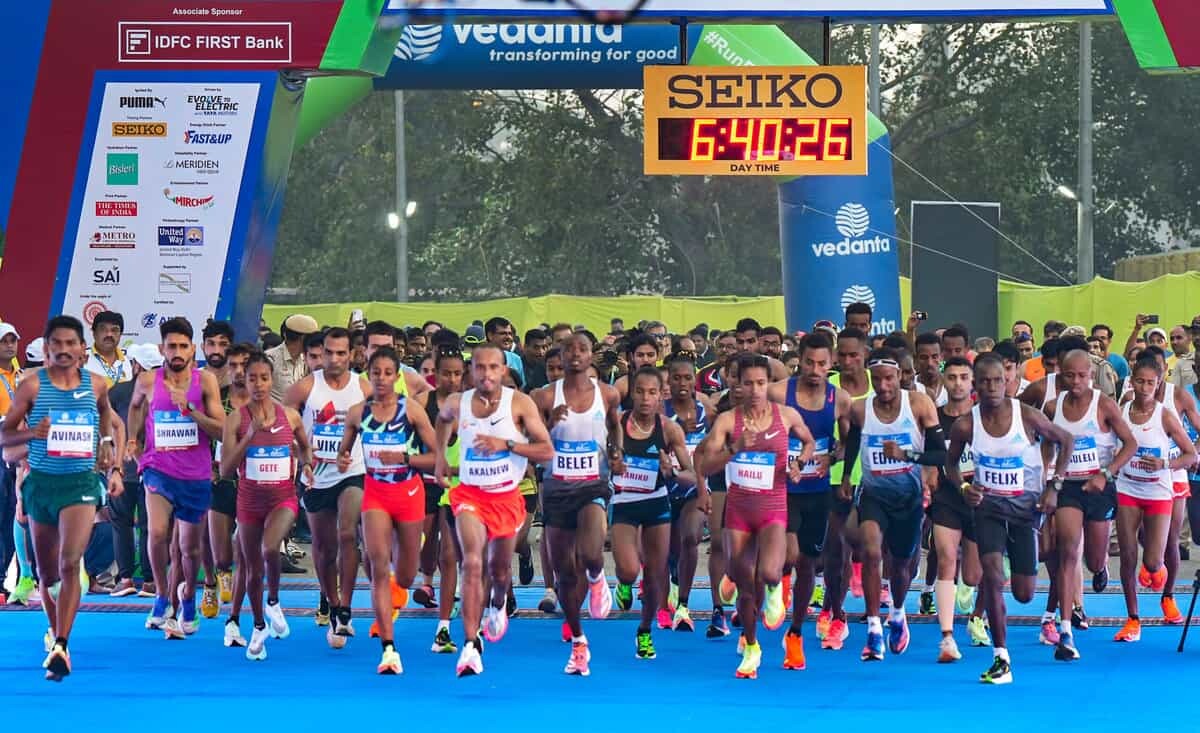
Thanks to technology, the Vedanta Delhi Half Marathon offers an immersive virtual experience for runners like Gopinath. "The app is fantastic," he says. "It announces the start, tracks your distance, and even alerts you about water stations. Even though I'm in Mysore, it feels like I'm in Delhi."
This virtual participation has brought joy and motivation to Gopinath, illustrating how technology can create connections and foster a sense of community among runners, no matter where they are. Gopinath's dedication is extraordinary.
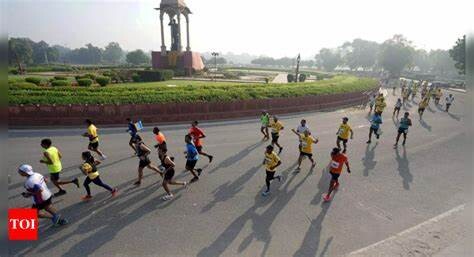
Over the last 11 years, he's run an incredible 57,412 kilometers. His achievements include around 380 medals and nearly 50 trophies, with an average of 25 to 30 events each year, including multiple half marathons.
But for Gopinath, running is more than just a way to collect medals. It's a lifestyle, a key to health and happiness. "Keep running, stay healthy," he advises. "Make running a part of your daily life, no matter your age or where you live. It allows you to fully enjoy your later years."
His daily commitment is unwavering-rain or shine, Gopinath runs 15 to 18 kilometers every morning. Even when traveling, he makes time for his run, adjusting the distance as needed.
Gopinath's message for those hesitant to start running is simple: "Don't be afraid to take that first step. Every journey begins with one step, and you'll be surprised by how far you can go."
As Gopinath continues to inspire others with his determination, his story is a powerful reminder that age is just a number. His participation in events like the Vedanta Delhi Half Marathon, even virtually, highlights the inclusive and unifying nature of running.
(10/08/24) Views: 272Mykhel Staff
'My gold medal is peeling'- Tara Davis-Woodhall stuns fans as Paris Olympics medal quality concerns grow
Olympic and Paralympic medalists raise concerns about the rapid deterioration of their recently awarded medals, sparking widespread athlete frustration.
Olympic gold medalist Tara Davis-Woodhall has sparked a storm of controversy after revealing that her prized gold medal is peeling, joining the growing concerns of fellow athletes, including Paralympic bronze medalist Allison E. Lang.
What should be an enduring symbol of their achievements is, instead, tarnishing—both literally and symbolically—just weeks after the medals were awarded.

Davis-Woodhall’s revelation came after Lang, who secured bronze in the recent Paris Paralympic Games, expressed her frustration on Threads.
Lang shared a photo of her rapidly deteriorating medal, showing visible signs of oxidation and peeling.
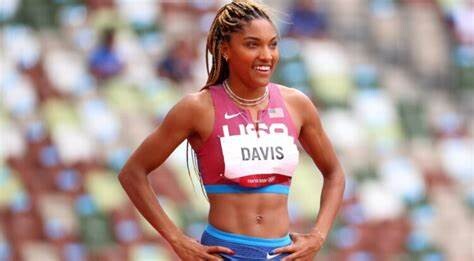
“I’m kind of disappointed. My Bronze Medal from Paris is already oxidizing and looks like it’s peeling/rusting like what’s going on @paralympics? I’ve only had it for less than a month!!” Lang posted.
Initially, some social media users dismissed Lang’s concerns, with one commenter stating, “Gold does not tarnish by the way,” but Davis-Woodhall quickly came to her defense with a stunning admission: “Actually… it does ? my gold medal is peeling.”
The long jump athlete’s candid response added fuel to the fire, shifting the spotlight from a single case to a potential widespread issue.
The idea that gold and bronze medals—symbols of lifelong dedication and effort—could deteriorate so quickly has shocked athletes and fans alike.
In the wake of the revelations, several athletes have started to inspect their own medals. Some, like Lang and Davis-Woodhall, are reporting similar problems, while others have claimed their medals remain in pristine condition.
This inconsistency has only deepened the mystery, raising questions about the materials and manufacturing processes behind these prestigious awards.
Tessa Axsom, the director of CNC at Fictive, a San Francisco-based company that specializes in custom mechanical parts, has weighed in on the issue.
According to Axsom, the problem may lie in the materials used in the medals, particularly copper oxidation.
“This year’s bronze medal is actually 97% copper, 2.5% zinc, and a half a percent tin,” Axsom explained as reported by The Sport Rush.
“Copper oxidation is natural, and it reaches stability when it forms oxides and salts. So, when you have sweaty athletes wearing these medals, getting salt on them, you’re going to get oxidation. The metal should have been protectively coated.”
Despite some media reports attributing the issue to the use of recycled metals—a sustainable practice championed by the Olympic and Paralympic committees—Axsom was quick to refute those claims.
She emphasized that using recycled metals is not the cause of the peeling and rusting. Rather, it is the lack of a proper protective coating that has left these medals vulnerable to the elements and wear.
As of now, neither the International Paralympic Committee (IPC) nor the International Olympic Committee (IOC) has issued an official statement addressing the situation.
However, whispers of cost-cutting measures have begun circulating, with speculation that the medals may have been produced under tighter budget constraints, potentially leading to the quality issues now being reported.
For athletes like Lang and Davis-Woodhall, the peeling medals are more than just a cosmetic problem. They represent the culmination of years of hard work, dedication, and perseverance.
Seeing their hard-earned medals deteriorate so quickly has left them and their fans questioning the lasting value of these symbols.
(10/05/24) Views: 157Festus Chuma
Veteran Kenyan marathoner dies after armed attack at his home in Eldoret
The former Vienna and Sapporo Marathon winner was attacked by thugs at his home in one of Eldoret’s exclusive estates.
Former Kenyan marathoner Samson Kandie has reportedly passed away following an armed attack at his home in Eldoret on Thursday.
Reports claim, Kandie, who represented Kenya at the 2001 World Championships, succumbed to his injuries following an attack by thugs at his Elgon View house in Eldoret, Uasin Gishu county.
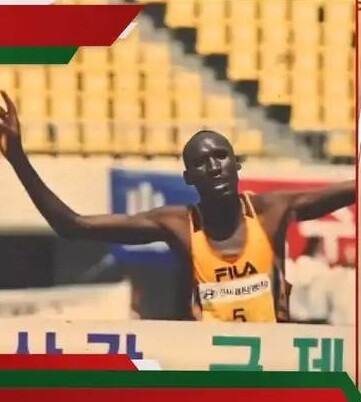
The motive of the attack is yet to be known but police in Eldoret are pursuing the matter with a view to nabbing those responsible.
The former Vienna and Sapporo Marathon winner was attacked by thugs at his home in one of Eldoret’s exclusive estates.

Former Kenyan marathoner Samson Kandie has reportedly passed away following an armed attack at his home in Eldoret on Thursday.
Reports claim, Kandie, who represented Kenya at the 2001 World Championships, succumbed to his injuries following an attack by thugs at his Elgon View house in Eldoret, Uasin Gishu county.
The motive of the attack is yet to be known but police in Eldoret are pursuing the matter with a view to nabbing those responsible.
It was his second third place finish in successive years after doing the same at the 1998 edition of the event, when he clocked 2:09:11.
Kandie also recorded third place at the Xiamen Marathon in China in 2000 and at the 2003 Prague Marathon after clocking 2:11:48 and 2:14:02 respectively.
His other marathon win came in San Sebastian Spain in 2001 after clocking 2:10:21.
(10/04/24) Views: 139Joel Omotto
Callum Hawkins to race at Great Scottish Run
The Scottish marathon record-holder will make his half-marathon return on home turf in Glasgow
Callum Hawkins is set to make his first half-marathon appearance of the year this Sunday (October 6) at the AJ Bell Great Scottish Run in Glasgow.
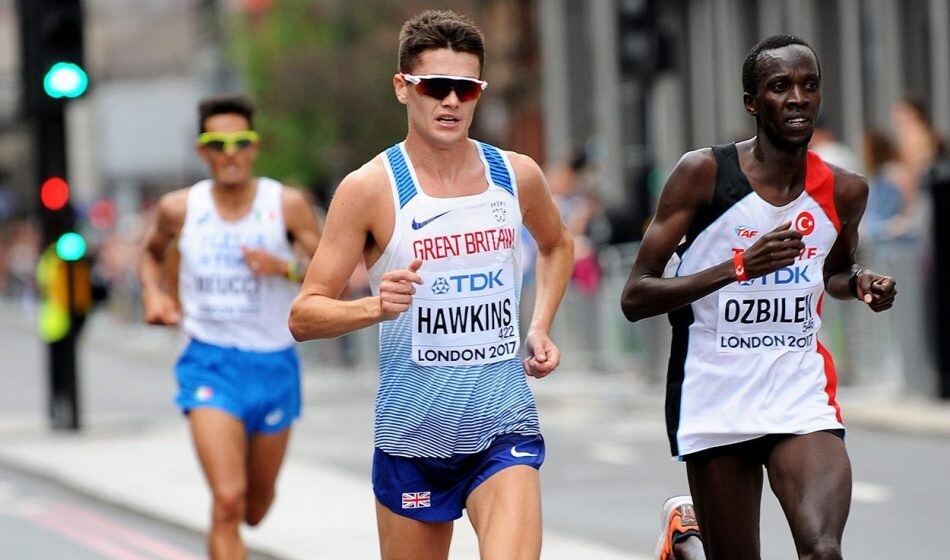
The 32-year-old hasn’t competed in any half-marathons this season, but he did race in the London Marathon back in April, finishing in 16th place with a time of 2:17:34.
In 2019, the Kilbarchan athlete set the Scottish marathon record at the London Marathon with a time of 2:08:14, securing a tenth-place finish. That same year, he was fourth at the 2019 World Championships over 26.2 miles.
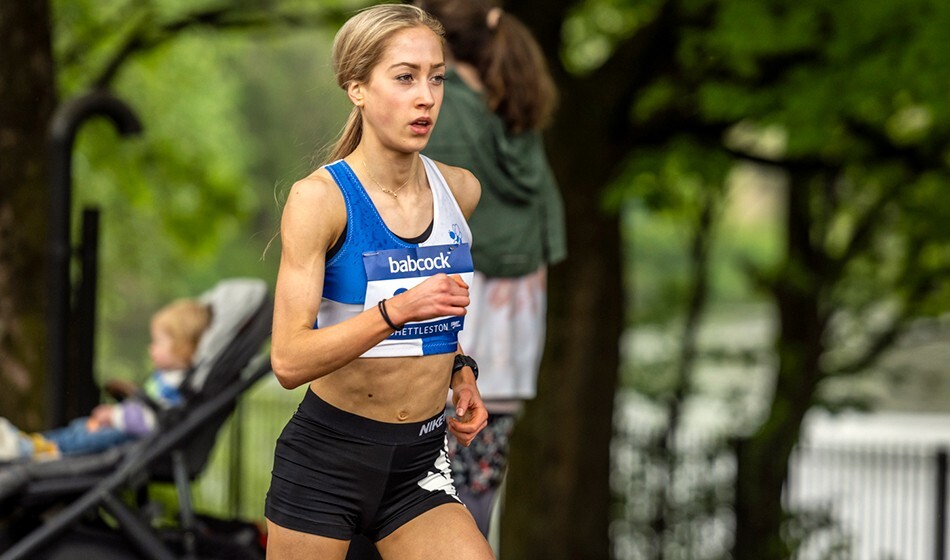
In 2019, the Kilbarchan athlete set the Scottish marathon record at the London Marathon with a time of 2:08:14, securing a tenth-place finish. That same year, he was fourth at the 2019 World Championships over 26.2 miles.
In the women’s race, rising star Natasha Phillips – the U20 European and British Half Marathon record-holder – will hope to make her mark on home turf. The 19-year-old also claimed the Scottish U20 cross-country title earlier this year in Falkirk.
The Great Scottish Run will also feature a 10km race, where double Olympian Chris Thompson, who recently announced his retirement, will make his final professional appearance in Scotland.
The 43-year-old, who represented Great Britain at two Olympic Games and earned a European 10,000m silver medal, previously won the Great Scottish Run half-marathon in both 2017 and 2018.
Thompson’s final meet before officially retiring will be at the Great South Run on October 20.
The Great Scottish Run is set to be the largest ever, with over 30,000 participants taking to the streets of Glasgow.
The 10km race will begin at 8.30am with the half marathon beginning at 10am.
(10/05/24) Views: 134Jasmine Collett
This Training Method Is Meant to Help You Slow Down on Easy Runs
Everything to know about the MAF method and letting heart rate guide your runs.
Runners often turn to time or distance, pace or feel to guide their workouts. But to get more precise about intensity, heart rate training offers an objective view of how hard you’re working and can help you get the most out of each step.

One way to tune into heart rate: the Maffetone method, a.k.a. MAF method. It’s a strategy based on maintaining a low heart rate for most of your runs, with the goal of revving your fat-burning engine and help you avoid injury, illness, and overtraining.
“I’ve coached hundreds of runners through MAF, and for some, it’s been a complete game changer; for others it’s just been massively frustrating,” says Amanda Brooks, Denver-based running coach and founder of Run to the Finish.
So what is the MAF method exactly, and is it for you? Let’s break it down.
The Idea Behind the MAF Method
This training strategy was created by Phil Maffetone, an applied kinesiologist, following decades of his clinical research about heart rate training. It can be called the Maffetone method or simply MAF—which is (obviously) short for his name but which also stands for maximum aerobic function.
“The thesis behind the MAF method is that low heart rate training will allow runners to build endurance while reducing their injury risk and avoiding fatigue,” explains Laura Norris, owner and coach at Laura Norris Running in Boulder, Colorado. “This low heart rate zone is where the body oxidizes a higher ratio of fat than carbohydrates for energy production.”
In other words, MAF keeps you in what’s considered the “fat-burning zone”—though it’s a misconception that running this way always equals fat loss, says Brooks. The benefit is more so that you train your body to run off of fat as fuel, which doesn’t burn as quickly as carbohydrates, so you can run longer.
To take advantage of the MAF method, you need a device to actually track your heart rate, whether that’s a smartwatch or chest strap (research suggests the latter is more accurate in some cases).
How the MAF Method Works
The MAF method is based on a very straightforward formula: Take 180 (a number Maffetone came up with based on his research) and subtract your age. The resulting number is your max heart rate in beats per minute (bpm), which you should stay under for most runs.
So, if you’re 40 years old, your heart rate shouldn’t go north of 140 bpm for nearly all your miles. In other words, it ensures that most of your running is easy running, which is the principle that most coaches recommend whether you’re following MAF or not.
But the plan does take a few other factors into account:
If you’re recovering from a major illness or injury, subtract 10 beats
If you’re not improving in your training or are just coming back to training, or if you get a cold or the flu at least twice a year, subtract 5
If you’ve been training for at least two years without any injury, add 5
If you’re over 65, add up to 10
If you’re under 16, use 165 bpm for your max
Does sticking under one number for your heart rate for most runs feel too strict though? For some people, it is, says Brooks. “Like most heart-rate running formulas, it doesn’t work for everyone,” she says.
On the other hand, the formula’s simplicity is what makes it so accessible for a wide audience. “It helps give people a guideline for figuring out what easy running should feel like,” Brooks adds.
Contrary to popular belief, MAF doesn’t mean every single run should be done at a low heart rate. “Many people don’t realize that once you’ve been doing it for a while to build your base or return to running, you are absolutely supposed to start adding back in speed work,” says Brooks. “Then it really turns into a more traditional 80/20 program, but the easy days are defined by your MAF heart rate.”
Benefits of Using the MAF Method
“Where MAF can shine is for runners who have consistent issues with injuries or coming back from illness—it gives them a more specific way to guide training and often prevent running slightly too hard all the time,” says Brooks.
In research that Maffetone conducted, 76 percent of runners who used the method leading up to a 5K improved their race time and only 9.5 percent got an injury, compared with nearly 62 percent of runners who got injured when they maintained their normal training schedule instead of MAF.
The MAF method is beneficial because of its emphasis on easy running, which should make up the bulk of any running routine. “Whether you call it low heart rate training, zone 2 training, or easy running, there are numerous benefits to runs below one’s aerobic threshold,” says Norris.
For example, because running at a low heart rate spares glycogen (in favor of fat burning), you can often keep running longer at this intensity and with less fatigue afterward. “Plus, easy running places less stress on the musculoskeletal system, so you can run more mileage while controlling your injury risk,” Norris adds.
Drawbacks of Using the MAF Method
The formula for MAF is simple, which makes it very easy to use, but it can also be limiting. “Some individuals are outliers—they will have higher or lower heart rate zones than generic formulas predict,” says Norris.
New runners and those over 40 often find it tricky to keep their heart rate low enough. Plus, adds Norris, factors other than age can affect heart rate. “Caffeine consumption, anxiety, hydration status, iron levels, and other variables will all alter your heart rate during exercise,” she says. “You may still be in an aerobic zone, but your heart rate may become decoupled from your oxygen consumption [your aerobic zone] due to caffeine ingestion or dehydration.”
Furthermore, using MAF does require wearing a heart rate monitor so you can keep an eye on your exact number throughout your runs. “Some runners get highly stressed out watching their heart rate,” says Brooks.
Being that focused on specific numbers isn’t always necessary to achieve results. Runners who trained guided by rate of perceived exertion (RPE) showed similar improvements over six weeks of training, as those who ran guided by their heart rate in a study published in the Journal of Strength and Conditioning Research in 2017.
The Bottom Line on the MAF Method for Runners
MAF can be an approachable training technique to help ensure you’re not pushing too hard on what should be easy runs (that is, the majority of your mileage). But like any running plan, it takes some adjustments and isn’t ideal for everyone.
“Whenever trying out a new training method, it’s important to assess whether you enjoy running any more or less with this approach,” says Norris. “If you don’t enjoy heart rate training, MAF is not for you.”
(10/05/24) Views: 117Runner’s World
How Many Calories Do You Actually Burn While Running?
Most people overestimate how many calories they torch while running. Here’s how to figure out your numbers—and tips to boost the burn.
There are so many reasons to run, including spending time in nature, taking a break from scrolling social media, and hanging with like-minded people. One of the most common reasons people turn to the sport: to boost physical and mental health. In fact, three out of four runners say staying healthy and in shape is a primary motivation for lacing up, according to a survey from Running USA.

For many people, “staying healthy and in shape” translates to burning calories and keeping weight in check, and running is a top activity for revving your heart rate and blasting calories. But just how many calories do you burn running one mile?
Turns out most people don’t know the answer: When runners completed both moderate- and vigorous-intensity workouts on a treadmill, they greatly overestimated how many calories they burned—some by as much as 72 percent—in a 2016 study in Medicine and Science in Sports and Exercise.
So let’s break down approximately how many calories the average runner burns over the course of one mile and how to calculate your calorie-burn rate, plus expert tips to raise that number.
How many calories does the average runner burn running one mile?
It’s difficult to generalize how many calories everyone would burn running one mile, as many factors play into your energy expenditure. But the general baseline is that runners burn about 100 calories per mile, April Gatlin, certified personal trainer and senior master coach for STRIDE Fitness in Chicago tells Runner’s World.
Two important factors that change that number are the intensity of your run and your weight, according to the 2024 Adult Compendium of Physical Activity, which calculates the energy cost of physical activity based on metabolic equivalents (METs).
Based on the MET chart, running a 10-minute mile (6 mph) is equivalent to about 9.3 METs. That means a 150-pound person (68 kilograms), would burn about 11 calories per minute or about 110 calories in a mile when running at 6 mph.
To calculate calories burned per minute using METs, follow this formula: METs x 3.5 x (your bodyweight in kilograms) / 200
Intensity and weight aren’t the only variables that can alter how many calories you burn running a mile, though. “Running mechanics play a big role in caloric expenditure—different aspects such as ground contact time, vertical motion, and muscular strength have a significant effect on the amount of calories that are burned or energy that is expended in terms of oxygen consumption,” Grace Horan, exercise physiologist at Hospital for Special Surgery in New York City tells Runner’s World.
That oxygen consumption, along with fuel utilization—which is how our cells use carbs and fat for fuel—is what caloric expenditure is all about, she says. Because there’s more vertical motion (or bounce) in running compared with walking, that translates to higher calorie burn. “Your body is now not only using energy to travel horizontally but vertically as well,” Horan adds.
What factors affect your one-mile calorie burn?
1. Weight
“The heavier the runner, the higher the calorie burn as their body is working harder to move forward,” says Gatlin. In fact, a 185-pound person burns nearly 100 calories more per 30 minutes of running at 5 mph compared with a 125-pound person, according to estimates from Harvard Medical School.
2. Pace
Running a fast mile will burn a higher number of calories than a slow mile, says Gatlin, especially if you mix in speed intervals: “Intervals will burn more calories overall due to the varied high-to-low heart rate burst causing excess post-exercise oxygen consumption (EPOC), which is an after-burn effect,” she explains. “That causes the body to continue to burn at the higher metabolic rate after the training is complete.”
The same holds true about running versus walking: People who ran a mile showed increased energy expenditure (read: calorie burn) for 15 minutes postworkout while those who walked the same distance increased the after-burn effect for only 10 minutes, according to a study published in the Journal of Strength and Conditioning Research in 2012, involving 15 males and 15 females.
3. Sex
“There is also some evidence that gender plays a role in caloric expenditure, with females often burning less calories compared to their male counterparts when running at the same speed for the same distance,” says Horan.
However, she notes, the difference in overall body mass between men and women is generally thought to be the primary cause for this.
4. Fitness, biomechanics, and genes
While concrete stats, such as speed and weight, contribute to calorie burn, so do fluctuating variables that are more difficult to count. “Burning calories is directly related to oxygen consumption, which is determined largely by the ability of the lungs to take in large amount of oxygen and the heart to pump oxygenated and nutrient-filled blood to the working muscles, so cardiorespiratory fitness [level] has a major effect [on calorie burn],” notes Horan. While there’s no simple way to incorporate these details into your calorie estimates, know that they do have a bearing.
In other words, while you can get a rough estimate of how many calories you burn over a given distance or time, remember that these are just estimates.
How can you estimate your personal calorie burn?
In addition to the MET equation mentioned above, Runner’s World has a calories burned calculator to help. Pop in your weight, along with how far you ran and how long it took you, and it’ll pinpoint approximately how many calories you expended on that outing.
While this does take some variables into account (i.e., your weight and speed), it doesn’t factor in extras like your fitness level or what kind of terrain you covered. For example, if your course was totally flat, you likely torched slightly fewer calories than if you’d encountered tons of hills, according to Gatlin.
How can you increase the calorie burn of your one-mile run?
1. Add in speed
The higher your effort during a run, the more calories you’ll burn per minute, which also means you can expend more energy in less time the faster you run.
Research backs this up: A study published in 2019 found that high-intensity interval training (doing 10 reps of one-minute intervals at 100 percent of VO2 max with one minute of recovery) took less time to reach the same energy expenditure of a moderate-intensity workout (going for 35 minutes at 65 percent of VO2 max).
Another study, published in 2013, also found that sprint interval training can increase total daily energy expenditure after one session.
2. Tackle hills
Heading to a hilly course outside (or cranking up the incline on a treadmill) is great for torching calories, because it’s as if you’re adding resistance training to the workout, notes Gatlin. That’s because your lower-body muscles perform at a higher level of mechanical work to increase your potential energy on an incline, compared with level or downhill running, according to a 2016 article in Sports Medicine.
3. Break up your run
Planning to run three miles today? If you break them up into three one-mile runs throughout the day and run each of those at a faster pace than you’d run one steady-state run, you’ll boost the calorie burn, says Gatlin.
The reason: It goes back to that afterburn effect—you burn more calories when you’re done running—as well as the ability to turn those shorter runs into higher-intensity exercise.
What other benefits do you gain from running a mile?
All this being said, frying calories is hardly the only benefit of a running routine. Opt to run instead of walk a mile and you will also boost your aerobic capacity, muscular endurance, and metabolic rate, says Gatlin.
Additionally, running improves your overall health by warding off all kinds of medical issues. “It’s heavily supported that increasing aerobic capacity through running has been linked to decreases in incidence of many health conditions, including heart disease, diabetes, and some forms of cancer,” says Horan. Plus, “recreational running on a regular basis also creates favorable conditions for bone formation, which leads to increased bone mineral density and decreased risk of fractures.”
Even slow, short runs have fantastic health benefits. One study that followed more than 55,000 Americans over 15 years found that those who ran less than a 10-minute-per-mile pace for five to 10 minutes a day had significantly reduced risk for all causes of death.
So even if you come to running for the calorie burn, there are good reasons (lots of them!) to keep coming back for an all-over health boost.
(10/05/24) Views: 114Emmaculate Anyango faces four-year ban following provisional suspension over doping
Kenya’s long-distance runner Emmaculate Anyango faces the prospect of a four-year ban after being handed a provisional suspension for doping as the net nabs another big fish.
Kenya’s long-distance prodigy Emmaculate Anyango has joined the list of shame following her provisional suspension for a doping violation.
The Athletics Integrity Unit (AIU) announced Anyango’s provisional suspension on Friday for the presence/use of a prohibited substance (Testosterone and EPO).
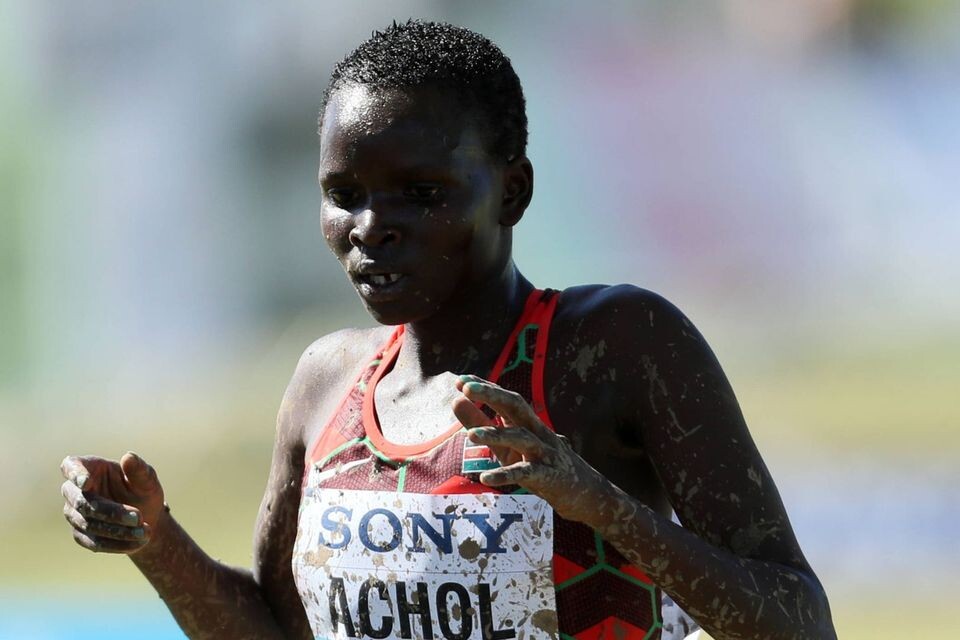
It means Anyango will remain suspended until her case is heard and determined and she faces a minimum of a four-year ban if she is found culpable.
It is a blow to the 24-year-old who was already making waves having been one of the standout athletes in the early months of the 2024 season.
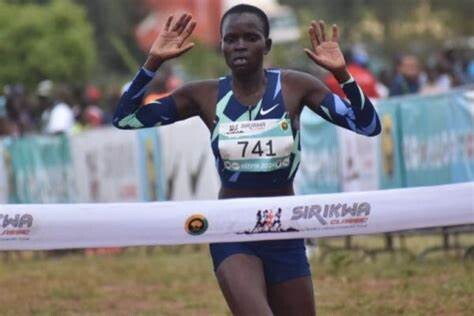
The Sirikwa Classic Cross-country champion was awarded the Sports Personality of the Month award for February by the Sports Journalists Association of Kenya (SJAK) after coming close to breaking the world 10km world record in February.
Anyango recorded the second fastest 10km time in history when she clocked 28:47 in Valencia, Spain, improving Ethiopian Yalemzerf Yehualaw’s world record (29.14) but unfortunately for her, compatriot Agnes Ngetich won the race in a better time of 28.46.
She would go on to finish fourth at the World Cross-Country Championships in Serbia followed by second place at the BAA 5k Road Run in Boston and in 10km Road in Bengaluru, India.
She, however, missed a place in team Kenya to the Paris Olympics after finishing sixth in the 10,000m trials which was held at the Prefontaine Classic, the Eugene Diamond League in May.
Back-to-back second places finishes would follow in 10km in Atlanta and in 15km in New York in July.
(10/04/24) Views: 104Joel Omotto
Competitive elite fields will contest the 21st edition of the Cardiff Half Marathon
A string of established Kenyan athletes will be chasing fast times somewhere underneath the course record of 59:30 in the men’s race. Meanwhile, a strong field that includes two-time European Cross Country Champion Fionnuala McCormack is set to contest the women’s race.
Cardiff is the penultimate venue in the 2024 Superhalfs Series. It holds a prestigious World Athletics Elite Road Race Label and hosts the Welsh Half Marathon Championships annually.
Elite Men
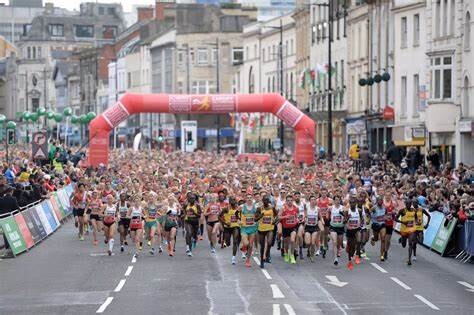
Benard Ngeno (59:07) is the fastest athlete on paper owing to an impressive lifetime best set at the Trinidad Alfonso Valencia Half Marathon in 2019, finishing second at the world’s top race over the distance. Cosmas Boi (59:29) comes to the City following a solid block of training that indicates a new P.B. could be possible. Perhaps his greatest accolade to date was a victory at the 2023 Stramilano Half Marathon.
Patrick Mosin (59:31) is the next fastest and was the winner of the 2023 Lille Half Marathon but more notably third at the Prague Half Marathon that was won by the current World Half Marathon Champion Sebastian Sawe in April.
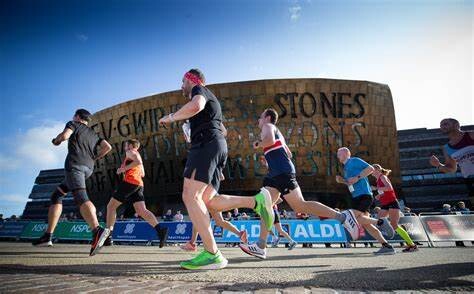
Bravin Kiptoo (59:37) is the 2019 African U20 Champion over 10,000m showing winning pedigree and then finishing as the third placer at the Birrell Grand Prix later that year and is joined by Antony Kimtai (59:45), the winner at Stramilano for 2024 and the runner-up at Napoli Half Marathon setting his P.B. a month earlier.
Vincent Kigen (59:48) was second at the Seville Half Marathon in January and again at the Malaga Half Marathon in March and Vincent Mutai (60:20) will make a third trip to the City as last year’s surprise winner and with a second place at the Cardiff Cross Challenge from November to his name.
Kento Nishi (61:09) of Japan, Ethiopian Man Enyew Nigat (61:17) and Tanzania’s Josephat Gisemo (64:27) will add further International flavour to a mainly Kenyan front of the field. Nishi is a 2:08:11 Marathon man, Nigat was seventh at the Yangzhou Half Marathon earlier this year and Gisemo was the runner up at the 2024 Generali Geneva Marathon.
Ben Connor (60:55) is the fastest British man and tackles the Cardiff course for the first time. Connor is the sixth fastest Briton in history and has shown recent fitness with an impressive second place at the re-scheduled English National Cross Country Championships in September.
Jonathan Collier (64:37) and William Bryan (64:58) are the remaining British Athletes who have dipped under 65 minutes in the past. Ciaran Lewis (65:17) is the fastest Welshman in action but is likely to face stiff opposition to the National title from Dan Hamilton (65:57) and Dan Nash (66:16).
Elite Women
Twice European Cross Country Champion Fionnuala McCormack (69:32) will make her Cardiff debut on Sunday. McCormack claimed her titles at Valenje, Slovenia in 2011 and at Budapest in 2012. Since then the Wicklow woman has become the second fastest Irish athlete in history over half marathon and over the full marathon distance. She became the first female Irish athlete in history to compete at five Olympic Games’ in Paris this summer.
Nelly Jepchumba (67:00) is the fastest entrant and was the winner at the Rio De Janeiro Half Marathon in August and the winner at the prestigious 2021 Madrid Half Marathon. Miriam Chebet (67:14) was the runner up at the Istanbul Half Marathon and notably the winner at the Ibiza 10k in 30:40.
Ethiopian Anchinalu Dessie (67:30) is another winner of the Stramilano Half Marathon in action here and was fourth at the Valencia Ibercaja 10k in 2022 with 31:01, an event that has recently been acknowledged as the World’s top annual road race.
Caroline Nyaga (67:36) is an exciting late edition to the race and will be chasing a huge new lifetime best. Nyaga is the 2022 African Champion over 10,000m and has a best over 5,000m of 14:30 set finishing fifth at the Diamond League final in Brussels last month. Daisy Kimeli (68:34) was the winner at the 2019 Trabzon Half Marathon and Adane Anmaw (69:47) was third at the Yanzhou Half Marathon.
Perhaps the most exciting prospect in women’s race however is Grace Nawowuna (debut) who will make her debut here but was fourth at the World Cross Country Championships in Bathurst in 2023 and has a 29:47 best for 10,000m. Nawowuna is likely to chase the early pace with Nyaga.
Polish Athlete Sabina Jarzabek (72:42) will be making the trip to Cardiff. She is a former Polish champion over 5km and 10km.
Olivia Tsim (73:38) claimed Bronze medals at the Welsh Half Marathon Championships here in 2022 and 2023. The Pontypridd Roadent will be in racing action after giving birth this summer. Alaw Evans (75:00) was the winner of the Cardiff 10k last year and is likely to be contesting for the Welsh title this time.
Australia’s Isabelle Pickett (75:36), Charlotte Taylor (75:46) and Ellen Feringa (75:54) of Philadelphia Runners Track Club are next fastest.
(10/04/24) Views: 104FR Newsdesk
‘Back to running ways’ – Eliud Kipchoge returns to work as he begins quest to reclaim glory
Marathon legend Eliud Kipchoge is determined to bounce back to winning ways quickly and has began early preparations for his 2025 season.
Two-time Olympics champion Eliud Kipchoge is wasting no time in hid bid to be ready for the 2025 season.
Kipchoge has returned to training to begin his preparations for the new campaign, looking to turn a new page in his career next year, following his disappointing outing in 2024.
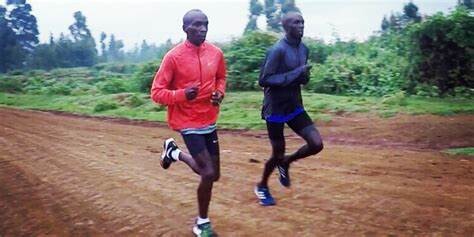
The marathon legend has not hidden his desire to continue winning and while some of his colleagues continue to enjoy a well-earned rest, he is back to work.
“Back to running ways,” Kipchoge posted on social media after returning to training.
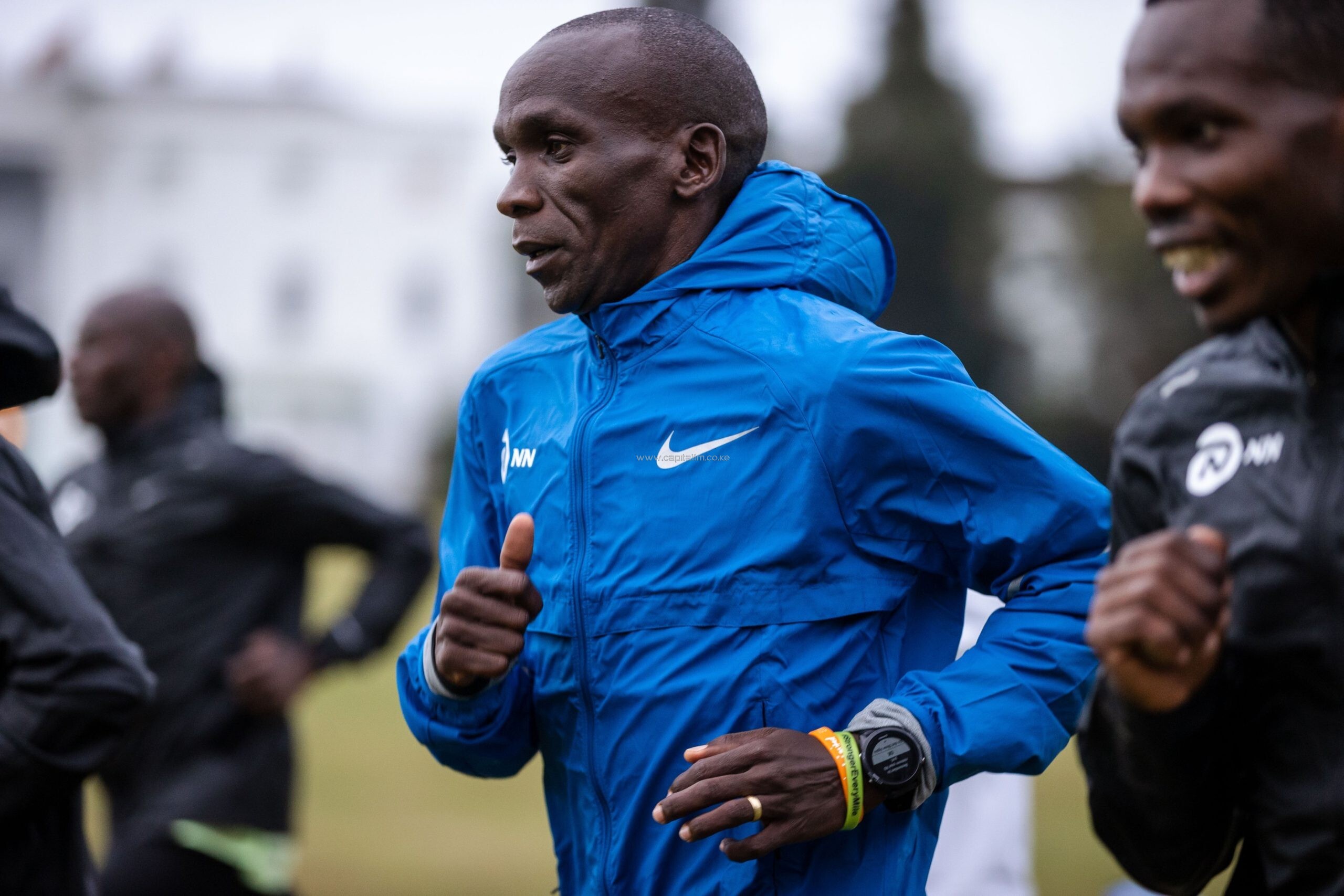
Kipchoge endured his worst year as he finished 10th at the Tokyo Marathon in March before dropping out of his race at the Paris 2024 Olympics at the 31km mark.
He has, however, vowed to bounce back strongly, expressing his desire to continue winning in the next few years.
“I still want to win something else,” Kipchoge told Runner’s World in September.
“Running is like life – full of challenges. That’s why it’s called life. You’re training, feeling tired, dealing with injury, not hitting the targets in training, not hitting the targets in rest – but consistency is the key.
“If you miss today, you wake up tomorrow. If you have a rest this month, and you actually know the goal that you set, don’t fall down. Wake up, move on every day and next time you will achieve it. Those small, small things will be a big thing.”
(10/08/24) Views: 104Joel Omotto
Is baking soda your next great fuelling tool?
You’re gearing up for a tough workout, and instead of grabbing your usual electrolyte drink, you’re reaching for… baking soda? It might sound like a kitchen hack gone wrong, but many endurance athletes swear by this household staple for improving performance (and the hydrogel company Maurten created an expensive product around it–more on that, below). Here’s what you need to know to help you decide whether this idea is half-baked, or if it’s the key to your next PB.
The science of sodium bicarbonate

Baking soda, or sodium bicarbonate (“bicarb” for short), has been studied for its ability to act as a buffering agent. During intense exercise, like a tempo run or hill repeats, your muscles produce lactic acid, which contributes to that dreaded “burn.” As lactic acid builds up, your muscle function declines. Sodium bicarbonate can help buffer this acid, delaying fatigue and potentially allowing you to sustain your effort for longer periods. A wide range of studies show that athletes who consume baking soda before high-intensity efforts may experience improved performance. But can it help you on those longer-distance runs? While more research is needed, some studies suggest that sodium bicarbonate might boost post-exercise recovery, with other research suggesting it may help runners speed up, even after hours of training.
Swedish sports nutrition company Maurten has created a hydrogel formula for runners that some athletes, like mountain athlete Kilian Jornet and world 5,000m and 10,000m record holder Joshua Cheptegei, swear by. Runners new to using sodium bicarbonate can adjust the hydrogel and bicarb components according to their weight and training needs.

Does it really work?
While there’s some solid science backing baking soda’s benefits, it’s not ideal for every runner. Most of the performance gains have been noted in shorter events, typically lasting between one to seven minutes of all-out effort. For distance runners, like those training for marathons or half-marathons, the impact may not be as pronounced. However, if you’re into track events or HIIT workouts, this kitchen staple could give you an easy-on-the-budget boost. The key is proper dosing (around 0.2 to 0.3 grams per kilogram of body weight) and timing–it should be taken 60 to 90 minutes before your workout or race.
Beware of side effects
Before you go dumping a spoonful of baking soda into your water bottle, be aware: it comes with potential side effects, the most common being gastrointestinal distress. Bloating, cramping or even diarrhea are possible, especially if you take too much or don’t properly dissolve it in water. If you’re interested in trying baking soda for a performance boost, make sure to test it out during training before a big race day, to avoid any unpleasant surprises mid-run.
(10/04/24) Views: 97Keeley Milne


